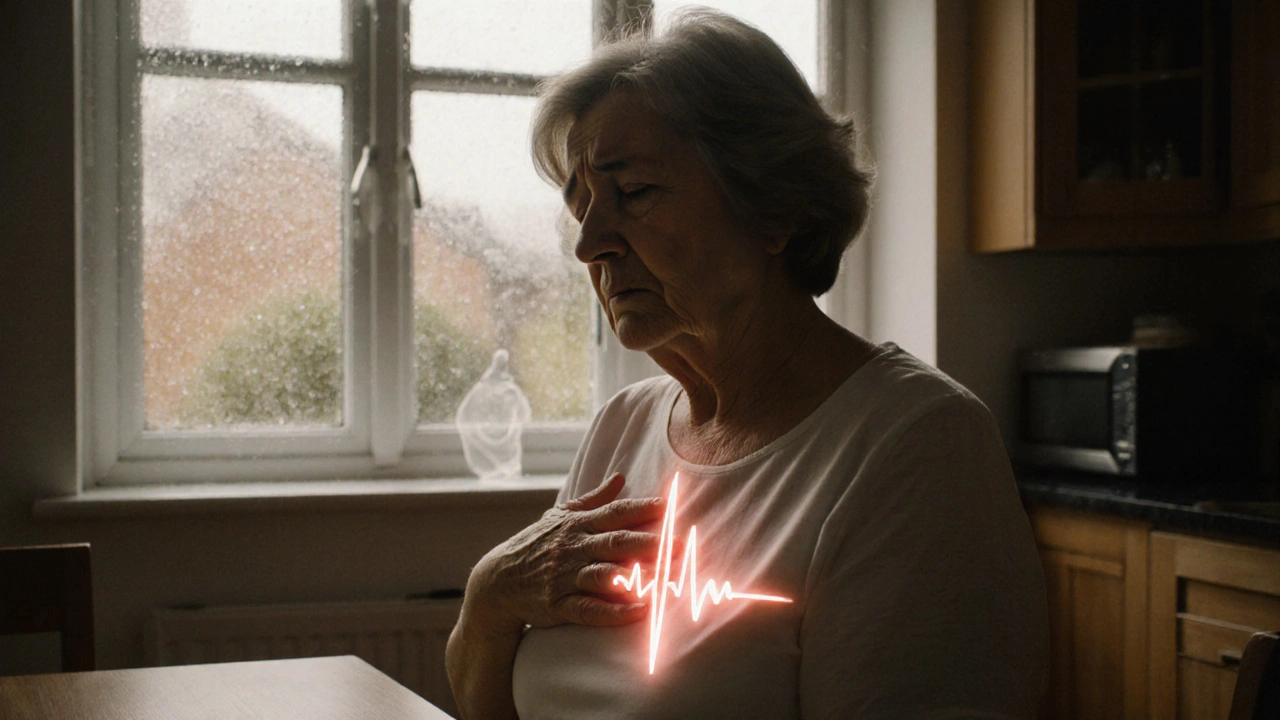Heart Rhythm: What It Is and Why It Matters
When your heart beats, it creates an electrical pattern called the heart rhythm. A steady rhythm means blood flows smoothly to every part of your body. If the rhythm gets off‑beat, you might feel fluttering, dizziness, or even chest pain. Knowing the basics helps you spot problems early and talk to a doctor with confidence.
Common Types of Rhythm Problems
Normal sinus rhythm is what most people have – about 60 to 100 beats a minute at rest. Bradycardia is a slower rate, usually under 60 beats per minute. It can be harmless in athletes, but it might cause fatigue or fainting if it’s too low. Tachycardia is a fast rate, over 100 beats per minute, and can make you feel nervous or short‑of‑breath. The term arrhythmia covers any irregular pattern, from occasional skips to sustained irregular beats.
Two common arrhythmias are atrial fibrillation (AFib) and premature ventricular contractions (PVCs). AFib causes the upper chambers to quiver, raising the risk of clots and stroke. PVCs are extra beats that feel like a thump‑skip‑thump in the chest. Both can be harmless, but they deserve a check‑up if they happen often.
How to Spot a Problem
Listen to your body. Warning signs include:
- Palpitations – a fluttering or racing feeling.
- Dizziness or light‑headedness.
- Shortness of breath, especially during light activity.
- Chest discomfort or pain.
- Fainting or near‑fainting episodes.
If you notice any of these, especially together, call your doctor. They may order an electrocardiogram (ECG) to capture the heart’s electrical activity in a few seconds. For intermittent symptoms, a Holter monitor (24‑hour ECG) or an event recorder can catch irregular beats that don’t show up on a quick test.
Blood tests can also help. Doctors check thyroid function, electrolytes, and hormone levels because imbalances can disturb the rhythm.
Simple Lifestyle Moves to Support a Healthy Rhythm
Most rhythm issues improve with a few everyday changes:
- Stay active – regular walking or light jogging keeps the heart strong.
- Limit caffeine and alcohol – too much can trigger extra beats.
- Quit smoking – nicotine irritates the heart’s electrical system.
- Manage stress – deep breathing, meditation, or a hobby can lower adrenaline spikes that speed the heart.
- Eat a balanced diet – leafy greens, fruits, lean protein, and low‑salt meals support overall heart health.
Keeping a healthy weight also reduces pressure on the heart, which can lower the chance of arrhythmias.
When Medicine or Procedures Are Needed
If lifestyle tweaks aren’t enough, doctors have several tools:
- Anti‑arrhythmic drugs such as beta‑blockers or calcium‑channel blockers slow down fast beats and help keep rhythm steady.
- Blood thinners are common for AFib to prevent clots and stroke.
- Cardioversion is a controlled electric shock that resets the heart to a normal rhythm, often used for persistent AFib.
- Ablation therapy uses heat or cold to destroy tiny areas causing abnormal signals. It’s a permanent fix for many people.
Each option has benefits and risks, so discuss them with your cardiologist. They’ll choose the best plan based on the type of rhythm issue, your age, and overall health.
Bottom line: a steady heart rhythm is key to feeling good day‑to‑day. Pay attention to symptoms, get checked when something feels off, and adopt simple habits that keep your heart ticking right. With the right mix of awareness and care, most rhythm problems can be managed effectively.
How Thyroid Disorders Trigger Heart Rhythm Problems
Explore how thyroid imbalances cause cardiac arrhythmias, the signs to watch for, and practical steps to diagnose and treat both conditions safely.
